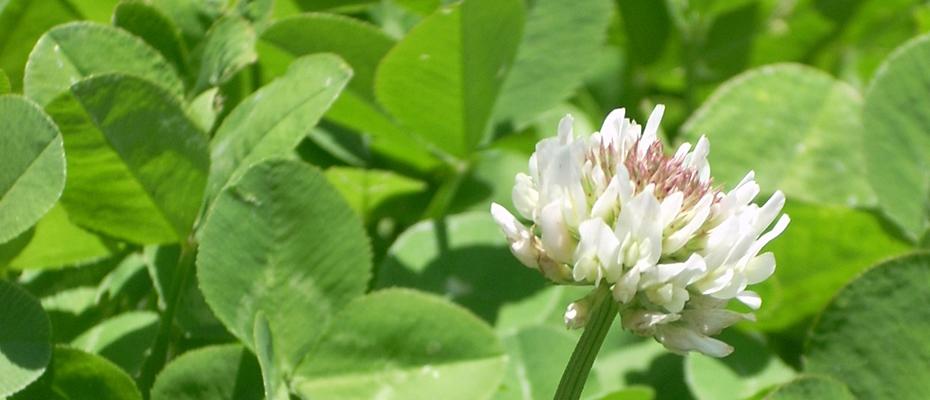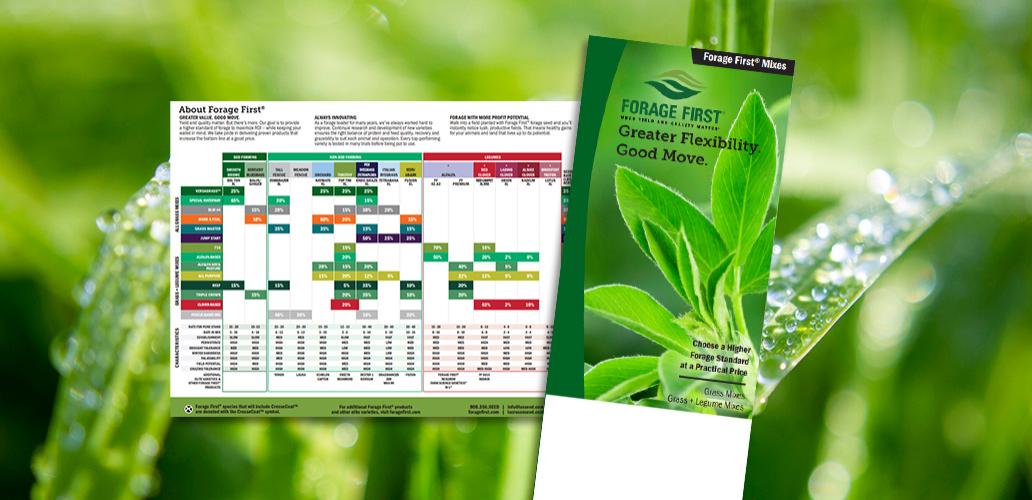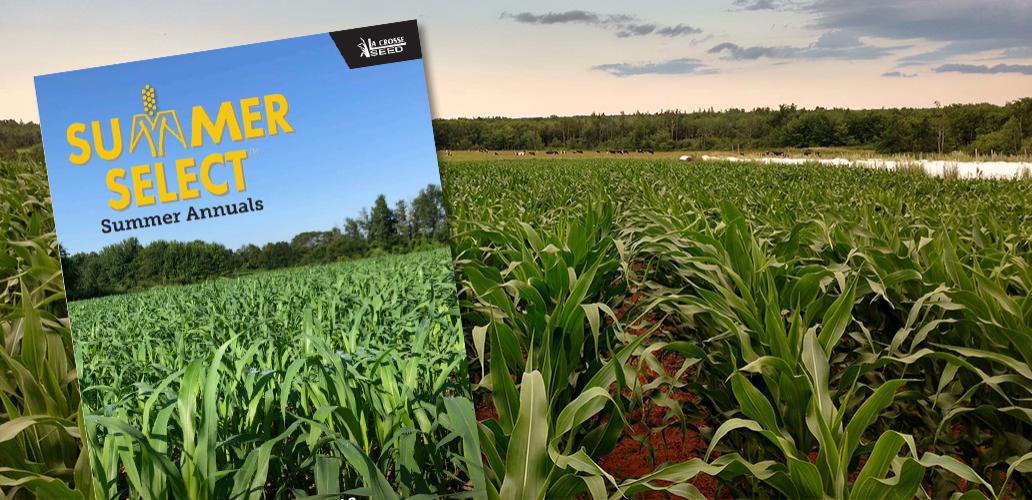Forage First Guide I Summer Select Guide
Greater Value. Good Move. Yield and quality matter. But there’s more. Our goal is to provide a higher standard for forage to maximize ROI– while keeping your wallet in mind. We take pride in delivering proven products that increase the bottom line at a good price.

Crusade is a vigorous, large leaf, winter-active variety of white clover. Leaflets are similar in appearance to Haifa, but can have a darker green appearance with fewer leaf markings. Crusade is slightly earlier in flowering than Haifa. Because of its winter-active characteristic, Crusade will provide grazing during the colder months in regions experiencing mild, moist winter conditions.
CHARACTERISTICS:
Establishment: Fast
Persistence: Medium
Drought Tolerance: Medium Low
Winter Hardiness: Medium High
Palatability: Medium High
Yield Potential: High
Grazing Tolerance: Medium
SEEDING:
Seeding Rate:
Alone (lbs./acre): 15-20
Mixes (lbs./acre): 5-10
Seeds/lb.: 138,000
Depth (in.): 1/4-1/2
Planting Time:
Mar.-May; Aug.-Sept.
Emergence (days): 14-21
Life Cycle: Perennial
Adaptation:
Smooth Brome is best adapted to cooler climates and is hardier than Tall Fescue or orchardgrass. It is resistant to drought and extremes in temperature. Smooth Brome is susceptible to disease in areas of high humidity. Smooth Brome grows best on slightly acidic to slightly alkaline well-drained clay loam soils with high fertility but it will also grow well on lighter textured soils where adequate moisture and fertility are maintained. Smooth Brome performs best in a pH range of 6.0-7.5.Growth is poor on soils high in soluble salts.
Establishment:
A clean firm seedbed is needed. Due to the slow germination and establishment of smooth brome, spring seedings are especially preferred in the northern states. In southern areas, late summer seedings are a second option. Fall seedings should be made at least 6 weeks before a killing frost is expected. Seeding rates are typically 3-10 lbs./acre in mixtures, and about 5-20 lbs./acre when seeded alone. If broadcast increase the seeding rate and cultipack after planting.
MANAGEMENT:
Management for forage is aimed at maintaining 40-50% clover. Close grazing (2 in. stubble) favors clover, whereas light grazing favors grass. Well-fertilized grass will outgrow clover in fall and winter and may smother clover. Spring nitrogen applications will stimulate grass and provide early feed, but excessive rates are detrimental to clover stand. Phosphate applications are broadcast in fall or spring according to soil tests. Sulfur, boron or magnesium may be needed for maximum production on some soils in western part of clover’s range.
- Improved winter growth
- Extended grazing potential during colder months
- Increased disease package=improved persistence

.png)
.png)


.png)










